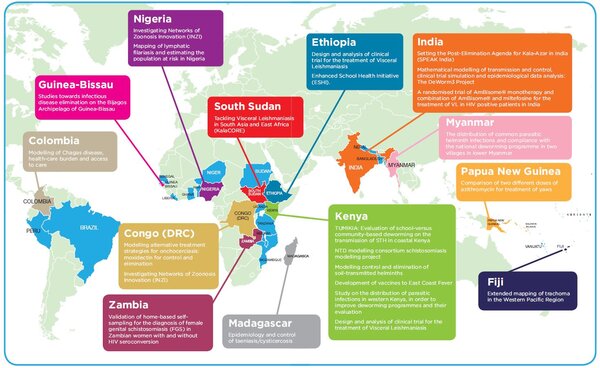Research Highlights from LCNTDR
07 Dec 2017
LCNTDR's new research booklet 'An Innovative Research Collaboration: Selected Research Highlights' (PDF 3MB) seeks to outline just some of the research activities being undertaken by LCNTDR's members. The booklet contains 14 articles in which the researchers provide a non-technical introduction to their research, why the research is necessary and the impact that they hope the research will have.
The research projects highlighted in the booklet include:
- Informing WHO schistosomiasis strategies through mathematical modelling - Imperial College London
- DeWorm3: Demonstrating the feasibility of soil-transmitted helminth elimination - Natural History Museum, Imperial College London and LSHTM
- Immunological basis of scarring trachoma - LSHTM
- Epidemiology and evolution of zoonotic schistosomiasis in a changing world - Royal Veterinary College
- How modelling is helping to identify the most effective strategies to control pork tapeworm - Imperial College London
- Identifying the best treatment regime to treat Yaws - LSHTM
- Reaching the 2020 elimination goals for human onchocerciasis - Imperial College London and Royal Veterinary College
- Understanding the impact of lymphatic filariasis in Nigeria - Imperial College London
- Developing a new vaccine to protect against Trachoma: TRACVAC - LSHTM
- WHO Collaborating Centre for the identification of schistosomes and their snail hosts - Natural History Museum
- Slides or dipsticks? Identifying the best diagnosis tools for schistosomiasis - Imperial College London
- Spraying fences in Sudan to reduce visceral leishmaniasis transmission - LSHTM
- WEAR: WEarable Aedes Repellent Technologies - LSHTM
- BALZAC: Behavioural Adaptations and Zoonose Control in Bangladesh - Royal Veterinary College
Download 'An Innovative Research Collaboration: Selected Research Highlights' (PDF 3MB)

